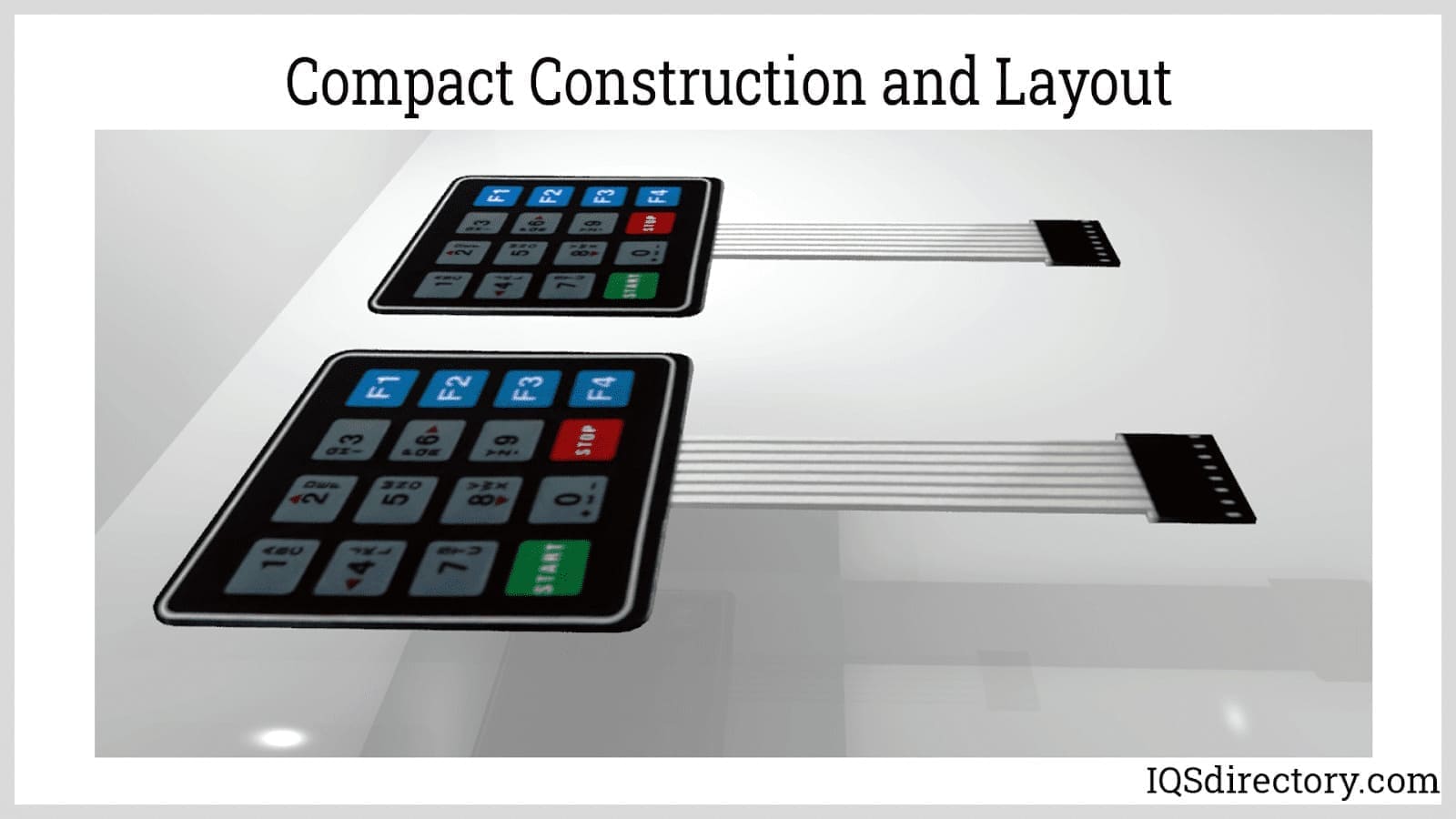Crucial Attributes to Seek When Picking a Membrane Switch
Crucial Attributes to Seek When Picking a Membrane Switch
Blog Article
Comprehending the Performance of Membrane Switches Over for Customer Interface Gadget
The performance of membrane switches stands for a considerable development in user interface layout, integrating efficiency with visual adaptability. These switches run with a multi-layered structure that equates user communications into electric signals, enabling both compact formats and resilience against environmental variables. As industries increasingly prioritize customer experience, comprehending the subtleties of membrane layer button innovation becomes necessary. What implications do these advancements hold for future applications, and how might they redefine user interactions throughout different tools?
What Are Membrane Layer Switches?
Membrane switches are ingenious user interface devices that promote user interaction with electronic equipment. These flexible components include several layers, including a graphic overlay, spacer, and a printed circuit layer. The style permits a smooth integration into various electronic devices, enhancing both the aesthetic and useful facets of customer interfaces.
Membrane layer buttons are generally used in a variety of applications, from house devices to commercial equipment and clinical gadgets. Their building normally includes a slim account, making them an ideal option for portable styles. The tactile responses supplied by these buttons can be crafted to satisfy certain user preferences, ensuring reliable interaction between the user and the tool.
Resilience is another considerable advantage of membrane layer switches, as they are resistant to dirt, wetness, and chemicals, which enhances their lifespan sought after settings. Furthermore, these buttons can be personalized in terms of form, dimension, and graphic layout, enabling branding and user-specific functions. Overall, membrane layer switches stand for a useful service for boosting individual experience in digital devices, incorporating performance with visual allure in an efficient fashion.
How Membrane Layer Switches Job
Operating on an uncomplicated principle, membrane layer switches utilize a layered building and construction to register customer input properly. Each switch contains multiple layers, including a published circuit layer, a spacer layer, and a top visuals layer, which are developed to function together effortlessly. When a user presses the top layer, it presses the spacer layer, bringing the conductive elements of the circuit layer into call with each other.
This call creates a closed circuit, indicating the tool to perform a specific function. The style permits various setups, consisting of responsive feedback, which can improve the individual experience by giving a physical sensation upon activation. The materials made use of in membrane layer buttons frequently include versatile substrates, such as polyester or polycarbonate, which guarantee longevity and durability versus deterioration.

Secret Advantages of Membrane Layer Buttons

Another considerable advantage is their compactness. Membrane buttons are thin and lightweight, which allows makers to save space in their devices without giving up functionality. This feature is specifically useful in applications where weight and volume are vital factors to consider.
Furthermore, membrane buttons are resistant to dust, moisture, and chemicals, improving their longevity. This durability expands their lifespan and lowers the requirement for frequent substitutes, causing price financial savings with time.
In addition, the responsive feedback provided by membrane layer switches can be optimized to improve individual interaction. They can consist of functions such as increased buttons or distinct clicks, enhancing usability and user experience.
Applications Across Industries
User interface devices making use of membrane layer switches are prevalent in a vast selection of industries, showcasing their adaptability and functionality. Membrane Switch. In the clinical field, membrane buttons are essential to devices such as diagnostic equipment and individual tracking systems, where their sturdiness and simplicity of cleansing are vital for keeping health standards. In the vehicle industry, these switches are used in dashboard controls and infomercial systems, giving a sleek and contemporary interface for users.
In addition, the customer electronics market gain from membrane switches in appliances and handheld devices, where small style and user-friendly interfaces improve user experience. Industrial applications likewise take advantage of membrane changes for control panels in machinery and automation systems, stressing their robustness and resistance to severe atmospheres.
In the aerospace and protection industries, membrane switches are utilized in cabin controls and tools, where integrity and performance under severe conditions are paramount. In addition, the gaming market progressively integrates membrane layer switches in controllers and arcade makers, adding to an appealing individual experience. Generally, the versatility of membrane changes enables their prevalent usage across countless sectors, emphasizing their value in modern-day individual interface design.
Future Trends in Membrane Layer Switch Over Innovation

Furthermore, using sophisticated materials, such as polycarbonate and polyester films, is anticipated to increase, giving improved toughness and resistance to environmental stressors. These products add to the total longevity of membrane layer buttons, making them appropriate for harsher industrial applications.
Moreover, the incorporation of wise innovation, consisting of IoT connectivity, will make it possible for membrane layer switches to interact with various other gadgets and systems, promoting a more interactive individual experience. This fad aligns with the growing demand for clever devices across numerous fields, from healthcare to customer electronic devices.
Finally, customization alternatives are prepared for to expand, enabling producers to develop bespoke solutions tailored to certain customer requirements and choices. These advancements will certainly position membrane buttons as crucial parts in the development of interface technology.
Verdict
Finally, membrane layer changes stand for an essential innovation in interface technology, providing a trustworthy and versatile remedy for varied digital applications. Their layered building and construction promotes small layout, while functions such as responsive feedback enhance customer interaction. The durability against environmental variables further strengthens their energy across several industries. As innovations in material science and touch noticing technologies continue, useful source the capability and applicability of membrane buttons are anticipated to expand, strengthening their importance in contemporary electronic tools.
Report this page